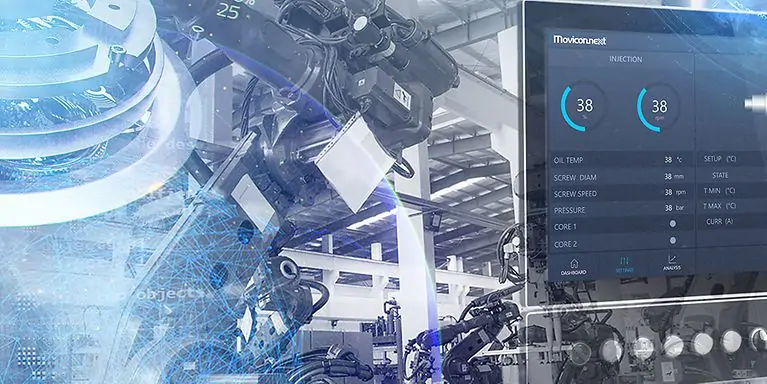RX3i PACSystems Integration: SCADA and HMI Connectivity Solutions
RX3i PACSystems require effective integration with supervisory control platforms. Proper SCADA and HMI connectivity ensures optimal industrial automation performance. This guide from World of PLC explores communication strategies and implementation best practices. According to MarketsandMarkets, the SCADA market will reach $50.2 billion by 2028.
RX3i Platform Communication Capabilities Overview
RX3i systems provide multiple industrial communication options. The platform supports Ethernet/IP, Modbus TCP/IP, and PROFINET protocols. These protocols enable seamless data exchange with supervisory systems. Engineers must select protocols based on system requirements and existing infrastructure. Proper configuration ensures reliable control system operation.
OPC UA Integration for Modern Industrial Automation
OPC UA serves as the industry standard for secure data exchange. This vendor-neutral protocol ensures interoperability between different systems. RX3i systems connect to OPC UA servers for data aggregation. The servers then distribute information to SCADA and HMI clients. This architecture maintains data integrity and security across the automation pyramid.
HMI Design Principles for Effective Operator Interface
Human-Machine Interfaces require careful design for optimal usability. Effective HMI screens display critical process information clearly. Operators monitor real-time data and initiate control actions. Key design considerations include:
- Hierarchical screen organization for navigation
- Consistent color coding and symbol usage
- Alarm management and acknowledgment systems
- Trend display for historical data analysis
- Security access level implementation
SCADA System Architecture and Data Management
SCADA systems provide plant-wide monitoring and control capabilities. They collect data from multiple RX3i controllers across the facility. The architecture includes data acquisition, network communication, and presentation layers. SCADA systems perform critical functions including historical data logging, advanced alarm management, and comprehensive reporting. Proper implementation requires careful network planning and security measures.
Network Infrastructure and Security Considerations
Industrial networks demand robust security and reliability. Implement defense-in-depth strategies for network protection. Use firewalls to segment control networks from enterprise systems. Monitor network traffic for abnormal patterns and potential threats. Regular security audits identify vulnerabilities in the control system infrastructure.
Real-World Implementation: Packaging Line Integration
A food processing facility demonstrates successful RX3i integration:
- RX3i controllers manage high-speed packaging machinery
- OPC UA servers aggregate data from multiple PLCs
- SCADA system monitors overall production performance
- Local HMIs provide machine-level control interfaces
- Historical data analysis identifies optimization opportunities
This implementation reduced unplanned downtime by 40%.
Industry Standards and Compliance Requirements
Industrial automation systems must comply with relevant standards. ISA-95 defines the enterprise-control system integration model. IEC 62443 addresses industrial communication security. NIST frameworks provide cybersecurity guidelines. Compliance ensures system reliability and interoperability across different vendor platforms.
Future Trends in Control System Integration
Industrial IoT technologies transform traditional integration approaches. Edge computing processes data closer to RX3i controllers. Cloud connectivity enables remote monitoring and analytics. Digital twin technology facilitates system simulation and optimization. These advancements enhance control system capabilities and performance.
World of PLC Integration Recommendations
Based on our field experience, we recommend these practices:
- Develop comprehensive integration documentation
- Test communication pathways before full deployment
- Implement redundant network connections
- Establish regular backup procedures for configuration data
- Train maintenance staff on system architecture and troubleshooting
Need expert assistance with your RX3i integration project? Discover professional solutions and components at World of PLC.
Frequently Asked Questions
What factors determine the best communication protocol for RX3i SCADA integration?
Consider existing infrastructure, data volume requirements, and network topology. Evaluate protocol support across all system components. Assess security features and performance characteristics. Choose protocols that align with long-term automation strategy and industry standards.
How do we ensure data security when connecting RX3i systems to enterprise networks?
Implement industrial firewalls between control and enterprise networks. Use VPN tunnels for remote access connections. Apply strict access control policies and user authentication. Regularly update security patches and monitor network traffic for suspicious activity.
What’s the typical implementation timeline for RX3i SCADA integration projects?
Basic integration requires 2-4 weeks for single system connections. Complex multi-system implementations may take 3-6 months. Timeline depends on system complexity, customization requirements, and existing infrastructure preparation. Thorough planning and testing phases ensure successful project completion.
| Model | Title | Link |
|---|---|---|
| IC695ALG608 | GE 8-Channel Analog Input Module | Learn More |
| IC695ALG808 | GE 8-Channel Isolated Analog Output Module | Learn More |
| IC695CPE330 | GE Fanuc RX3i CPU Module | Learn More |








